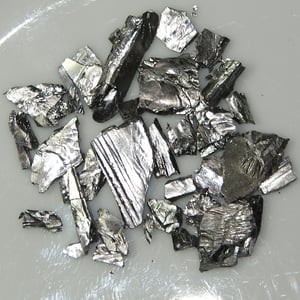Egdon Resources plc (LON:EDR) Managing Director Mark Abbott caught up with DirectorsTalk for an exclusive interview to discuss their quarterly financial update, the approval of the Wressle Field Development Plan, next steps at Wressle and what investors should be looking out for in the coming months.
Q1: Last week, you provided a positive update on third quarter revenues and financial position. Could you just summarise for us and advise what main drivers were that improved the results?
A1: Strong oil and gas production for the three months from February through to April, coupled with very high oil and gas prices has translated into an excellent fiscal performance for Egdon Resources. We had revenues of £2.23 million during that period and that compares very favorably to just over £2.5 million for the previous six-month period.
That improvement has been driven by the continuing high levels of production from our Wressle and Ceres fields, coupled with those high oil and gas prices. Just to put those in context, the average realized price during the period was nearly $107 a barrel of oil and over £2 per therm of gas.
I think importantly, we also highlighted that we’d repaid the £1 million loan facility to Union Jack plc and our balance sheet is significantly improved with this cash flow cash. Cash and cash equivalents at the end of April of £2.73 million, allowing for that loan repayment and net current assets of £2.76 million so that’s up over £1.5 million from the end of January when we reported our interim results.
So, the last year has been transformational for the business, we’re now debt-free and funded for all our near-term commitments and with an expectation of continued strong production and revenue.
Q2: Now, your press release this morning advises that the Field Development Plan has been approved for Wressle, could you just explain the significance of this?
A2: I suppose it’s procedural in a way, but the approval of that Field Development Plan by the North Sea Transition Authority is a key milestone for the field. It provides us with the consent to move from extended well test production to long term production and validates our plans for the field.
The NSTA also approved the Wressle licenses, that’s PEDL180 and PEDL182 entering their production phases so those licenses now go on to 2039 so it removes any uncertainty about the production and the consents behind that.
Wressle is an excellent asset, it continues to generate high levels of production and result in revenues and Wressle-1, we think, is currently amongst the most productive onshore well in the UK, it’s produced over 170,000 barrels of oil to date.
Q3: As you say, Wressle clearly is a key asset but what do you see as the next steps here?
A3: Well, our focus now turns to completing the installation of the few remaining permanent production facilities on the site and also looking to progress the planning, permitting, and implementation of the monetization plan for the gas, which we’re currently having to incinerate. Importantly, as well as providing a further revenue stream, that’ll remove the limitations on oil production, which currently imposed by the environmental permit, which restricts the amount of gas that we can incinerate.
In parallel with that, we’re looking to optimise production from the current reservoir at the Ashover Grit. We’re also advancing the development plan and consenting process to enable us to produce from the Penistone Flags, the shallower reservoir where we see gross mid case contingent resources of 1.5 million barrels of oil and 2 billion cubic feet of gas, which have been independently reported.
So, I think with this further potential, the Wressle field is at the start of its journey and should be a significant asset for Egdon for many years to come.
Q4: What should investors be looking out for from Egdon Resources in the coming period?
A4: I suppose as well as the continuing high levels of production and revenues that we’re experiencing, as I’ve highlighted, we also have a number of other potential value drivers for the coming period.
So, we’re progressing plans to increase production at Keddington through the drilling of a new sidetrack well, which is probably going to be undertaken early in 2023. At Waddock Cross, down in Dorset, shut in oil field, we’re looking to update all of the approvals and consents for potential drilling again in the early part of next year. Both of these could add significantly to our production revenues.
We’re also awaiting the outcome of the planning appeal at Biscathorpe and currently preparing another appeal for North Kelsey. Positive outcomes there could lead to drilling at these sites next year.
The other thing that that’s quite current, and we await with interest, the review by the British Geological Survey in relation to shale gas and the government’s response to that. Any movement on the moratorium on hydraulic fracturing for shale gas could lead to a major rerating of Egdon, we hold a very significant resource base in the Gainsborough Trough which we believe is the premier UK shale gas basin.
We also continue to review a number of opportunities in terms of geothermal energy, energy storage, hydrogen and renewable generation, and expect to make progress here in the coming period.
So, I think there’s plenty of news flow over the coming period and a positive outlook for the business.




































